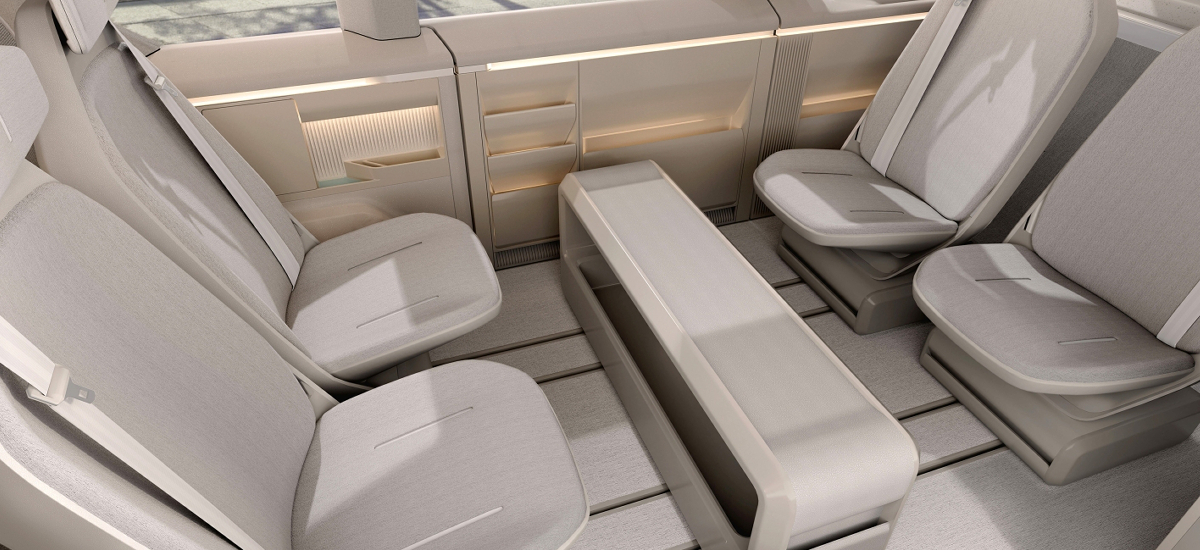
 Your Credit Estimate
Your Credit Estimate
 Your Credit
Your Credit
Your zip code helps us provide you with the most accurate vehicle pricing and vehicle availability.
We estimate your credit score to give you an idea of your monthly payments. To get an accurate payment amount, complete our credit application by clicking the Start Credit Application button below.
start credit application
Back in 2022, the Hyundai Motor Group shared its “Smart City” master model at the 2022 World Cities Summit in Singapore. An ecosystem of mobility and sustainability, the design also incorporated the possibilities of purpose-built vehicles (PBVs), robotaxis, and even urban aircraft models (Supernal). Now in 2024, during the 2024 Consumer Electronics Show, the auto group introduced a new kind of PBV – platform-based vehicles – and they’re not just automobiles. Think like giant LEGO bricks for adults, where the various parts of an automobile can be switched out and swapped depending on its purpose or utility.
Phase One
Broken down into three phases, the company will start to roll out these new PBVs with the introduction of the Kia PV5, a versatile battery-electric vehicle (BEV) designed for ride-hailing, deliveries, and utilities. Enhancing the data connectivity between vehicles and external data such as route or delivery information, can make companies with large commercial fleets much easier to manage. With a variety of fixed cabs to choose from, the PV5 will be made available as a Basic, Van, High Roof, and Chassis Cab versions for consumers to choose from.
Phase Two
In the second phase, Kia will release a dedicated PBV model lineup with AI-based mobility that will pave the way for robotics and other future technologies. This will also introduce an AI platform that can interact with its users, possibly going beyond a simple smart speaker like Amazon Alexa or Google Home. Currently, two models are planned – (1) the PV7, a model designed with a focus on interior space, greater driving range, and enhanced functionalities, followed by (2) the PV1, optimized for agility and short-distance logistics transportation.
Phase Three
This is where the highly customizable mobility solutions come into play. Said to have autonomous technology by this point, connected self-driving vehicles can be managed as part of a city-wide operating system. A part of that smart city concept HMG introduced, hyper-connected PBVs and social infrastructure can be linked together and interact to make way for retail autonomous driving, advanced air mobility, robotics, and better use of the energy grid. Phase three will also see the release of PBV modularity, thanks to “Easy Swap” technology and “Dynamic Hybrid” weldless body structure assembly.
Made up of high-strength tubular steel and engineered polymers, the fixed cab mentioned above is joined by a variety of interchangeable upper bodies, or “life modules”. Consumers can take these modules and interchange them without needing outside help. Thanks to hybrid electromagnetic and mechanical coupling technology, a consumer can take a PBV and turn it into a taxi, a delivery van, a personal recreational vehicle, or even an office.
The way it all works is an integrated rail system that runs along the vehicle's ceiling, floor, and around the vehicle’s exterior, including the side panels. With various cabinets and frames available, the consumer can move modules along the “rails” and choose various “tiles” for functional accessories, such as speakers and shelves. The possibilities are nearly limitless when a consumer can basically change the look and functionality of their vehicle. It definitely changes the game for the auto industry, so of course Kia would be behind it.
Want to follow along and learn more about cool car tech coming from Kia? Stay up to date when you follow along with us on NowCar social media.